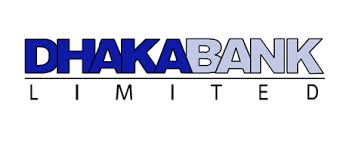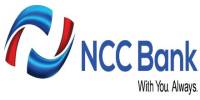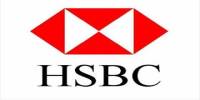Analysis of Tax-VAT payment system of Dhaka Bank
Dhaka bank has quite a strong market image. Local people know Dhaka Bank as a centered of trust and professional where local expertise use to serve. Dhaka Bank Limited is a reputed company in banking industry of Bangladesh. Among a number of Bangladeshi banks, Dhaka Bank Limited is one of the bests for its incredible advancement towards global banking standard and adaptation to new technological innovation and implementation.
Dhaka Bank Limited is a valued corporate taxpayer of Large Taxpayer Unit (LTU) and National Board of Revenue (NBR). It manages a competent system of TAX and VAT payment under the direct surveillance of the Head of Finance and Accounts Division.
My site supervisor assigned me to aid in the day to day operation of the TAX-VAT sector and also to reorganize the filing system of the whole Finance & Accounts Division. Everything I was assigned to do was knowledgeable, interesting and moreover practical. I have got the essence of the real picture of corporate world and therefore it contributed heavily to my experience of the real scenario of the economy of Bangladesh.
For reader’s information, this report consists of three parts. The first part describes the details of the organization with its history of establishment and the structure of the board and the Finance and Accounts Division. The second part is all about my day to day tasks and coursework. The whole TAX-VAT payment system and some pointers generated by me to improve efficiency of the system are laid in the last part.
Background of Dhaka Bank Limited
Bangladesh economy has been experiencing a swift growth since the 90’s. Industrial and agricultural expansion, global trade, inflow of expatriate Bangladeshi workers’ remittance, local and overseas investment in structure, communication, power, food processing and service enterprises ushered an era of economic activities. Urbanization and lifestyle changes concurrent with the economic development created a demand for banking products and services to support the new initiatives as well as to channelize consumer investments in a profitable manner. A group of highly acclaimed businessmen of the country grouped together to respond to this need and established Dhaka Bank Limited in the year 1995.
The bank was incorporated as a public limited company under the Companies Act. 1994. The bank started its commercial operation on July 05, 1995 with an authorized capital of Tk. 1,000 million and paid up capital of Tk. 100 million. The paid up capital of the bank stood at Tk. 2,659,597,763 as on March 31, 2010. The total equity (capital and reserves) of the Bank as on March 31, 2010 stood at Tk. 6,036,368,754.
Dhaka Bank has 71 branches, 3 SME Service Centers, 6 CMS Units, 2 offshore banking units across the country and a wide network of correspondents all over the world. The bank has plans to open more branches in the current fiscal year to expand the network.
As an important part of its obligation to excellence in banking, Dhaka Bank now offers the full range of actual time online banking services through its all branches, ATMs and internet banking channels.
Dhaka bank Ltd. is the preferred choice in banking for friendly and personalized services, cutting edge technology tailored solutions for business needs, global reach in trade and commerce and high yield on investment.
Job responsibilities
My job responsibility as an intern was to learn and analyze the field I was assigned to work in. As I was in the Tax-VAT sector, my job was to lend a hand in every work my sector does in order to learn practically from the whole Tax-VAT route. I was involved in almost every tasks and duties I encountered in this internship period. My job consists of many operational duties and also some of the regulatory reporting duties of DBL. I would like to elaborate on those in brief.
Operational duty- Operational duties refer to those duties which are required in daily operation to perform the transactions efficiently. That are-
- Corporate/ source Tax-VAT are payment monthly
- Advance Tax Payment (Quarterly & yearly)
- Payment of excise duty
- Calculating Tax (Quarterly, Half yearly & yearly)
- Synchronization with regulatory body and Tax-VAT consultant of the bank
- Conveying management authorization (relating to payment, appeal and others)
- Preparing foundation & credentials for appeal and attending Hearing/ Meeting when necessary
- Updating Tax situation
- Harmonizing condition of Taxation and Advance tax & resolution
Regulatory reporting-
- Yearly return of Tax
- Monthly return of VAT (Mushak-19)
- Annual excise duty statement
- Monthly report to regulatory body
- Quarterly report Tax u/s: 75A
- Supervising VAT and Tax of bills and vouchers
- Issuance of income Tax & VAT certificate
- Supervise and monitoring of Tax-VAT at branch level
- Collecting different reports/challans from branches (monthly, quarterly & yearly)
- Managing Documentation of all types of file, Challan
- On demand of LTU all the Statement pertaining to Utility bills are collections from branches.
Those duties mention above are the major duties of Tax-VAT sector. I was concerned in the stage and support in each of these duties following the direction of my supervisor which prepared it simple for such a new person like me.
On-the-job training
On-the-job training (OJT) is a form of training taking place in a normal working situation. Onthe-job training, sometimes called direct instruction, is one of the earliest forms of training. It is a one-on-one training located at the job site, where someone who knows how to do a task shows another how to perform it.
The most valuable training in a job is On-the-job training. It is considered most efficient because it provides a practice facility of the education during the work time which makes every apprentice learn properly undoubtedly. During my internship, I was lucky enough to obtain On the-job training from some very conversant and qualified personnel of banking industry who were always extremely helpful and supportive to my training course. I received a cosmic training on the modernized Tax-VAT policy over banking industry of Bangladesh.
Tax-VAT regulatory body updates and makes amendments time to time to the Tax-VAT laws and regulations to make it more efficient. On account of this, the Tax-VAT treatment system of every bank also has to undertake changes time to time. It is an advantage of Dhaka Bank Limited that the system of Tax-VAT sector is bendable enough to undertake all potential changes without bearing much hassle.
As a beneficiary of being an intern in the Tax-VAT sector, my admittance to the subjective training and day to day concepts of internal policies and handling process of my sector was not slim. I was provided with all necessary reading materials to study the modernized Tax-VAT regulations of Tax-VAT regulatory body and also the real time documents regarding to this explicit subject. I was very glad having the supervision of my field supervisor which made it easy for me to grab and comprehend the topics quickly and also to practice it along with the training.
The knowledge I have gone through is the inside out of the real time Tax-VAT picture of Bangladesh. I learned about cutting Tax and VAT on the services the bank provides to its clients and the services the vendors and suppliers provide to the bank correspondingly. I learned about the organizations which are allowed by Government to cut and collect Tax and VAT from general businesses and organizations and also from mass people who are subject to taxation.
National Board of Revenue (NBR) and Large Taxpayer’s Unit (LTU) are the regulatory bodies of Tax-VAT for banking industry and also accountable for collecting Tax-VAT after a specific time period. I also learned about the unsettled and tricky issues which are yet to be attained with legal solutions.
Description & Analysis of Tax-VAT
Types of Tax-VAT
Tax
Like all other organizations in the banking industry of Bangladesh, Dhaka Bank Limited is one of the most respected corporate taxpayers of National Board of Revenue (NBR). DBL’s
Taxpaying process consists of two categories. They are-
- Corporate Tax
- Source Tax
Corporate Tax- Many countries impose corporate tax, also called corporation tax or company tax, on the income or capital of some types of legal entities. The taxes may also be referred to as income tax or capital tax. Company income subject to tax is often determined much like taxable income for individuals. Generally, the tax is imposed on net profits. Like others, Dhaka Bank Ltd pays its corporate Tax in four installments. However corporate Tax is calculated yearly, it is paid in each of the quarters of a year.
Source Tax- Tax deducted at source (TDS) is amount of tax getting deducted from the person (Employee/Deductee) by the person paying (Employer/Deductor). Under the process of TDS, Deductor is a person/company who is liable to deduct the Tax at source, from the payment being made to the party. Deductor is also termed as Employer in cases where the payments are in the form of Salaries.
A tax deductor is also required to issue TDS certificate to the deductee within specified timed under section 203 of the I T Act. The con from the deductor, for the deduction and payment of the respective TDS amount to the bank, issued to the deductee is a TDS certificate.
The deductee should produce the details of this certificate, during the regular assessment of income tax, to adjust the amount of TDS against the Tax payable by the deductee. VAT
A value added tax (VAT) is a type of consumption tax that is placed on a product whenever value is added at a stage of production and at final sale. From the view of the buyer, it is a tax on the buying price. From that of the seller, value added tax only on the value added to a manufactured goods, material, or service, from an accounting point of view, by this stage of its manufacture or distribution. The manufacturer remits to the government the difference between these two amounts, and retains the rest for themselves to offset the taxes they had earlier paid on the inputs.
The amount of value-added tax that the user pays is the cost of the product, less any of the costs of materials used in the product that have already been taxed. VAT is applicable to all domestic products and services with some exemptions. VAT is payable at the time of supply of goods and services. Tax returns are to be submitted on monthly or quarterly or half yearly basis as notified by the Government.
For example when a television is built by a company in Europe the manufacturer is charged a value-added tax on all of the supplies they purchase for producing the television. Once the television reaches the shelf, the consumer who purchases it must pay the value-added tax that applies to him or her.
For the first time in 1991Value Added Tax was introduced in Bangladesh replacing Sales Tax and most of Excise Duties. Also that year the Value Added Tax Act, 1991 was enacted and started its journey from 10 July 1991. From that 10th July is observed as National VAT Day in Bangladesh.
Within the journey of 23 years, Value added tax has become the biggest source of Government Revenue. Bangladesh earned about 56% of total tax revenue is VAT revenue in a year. VAT is imposed on goods and services at import stage, manufacturing, wholesale and retails levels. A uniform VAT rate of 15 percent is applicable for both goods and services. However 15 percent VAT is applicable for all business or industrial units with an annual turnover of Taka 2 million and above. Turnover tax at the rate of 4 percent is leviable where annual turnover is less than Taka 2 million. Tax paid on inputs is creditable/adjustable against output tax. Export is exempt. Besides these rates, there are several reduced rates locally called Truncated Rate, in this case of goods and services producers and sellers face difficulties in availing VAT credit/adjustment facilities due to non availability of invoices from the sellers of input. In order to remove this operational difficulty fixed bases such as 10%, 25%, 30%, and 60% value addition is taken into account for calculation of VAT for a number of goods and services. In such circumstances net VAT rate for different rates of value addition comes to 1.5%, 2.25%, 4.5% and 9%.
Dhaka Bank Ltd. classifies Value added tax connected resources into two types.
- VAT Income
- VAT Expense
VAT Income: Dhaka Bank Ltd. adjusts Value added tax on each earnings excluding export related earnings. For example, if DBL receives BDT 1000, from a client government will obtain BDT 150 as VAT Income. By this system income of bank will be subject to VAT income as well as client’s income also subject to VAT income.
VAT Expense: VAT expense is mainly related with the expenditure. This is the VAT Dhaka Bank Ltd. cuts on the expenses it incurs through other vendors and suppliers. The payment they get is subject to VAT which is cut by the bank according to the regulatory body. For example, if Dhaka Bank Ltd. receives a supply of food by a vendor, it will cut the VAT on the total bill of the vendor by 15%.
Audit and Inspection
Audit is one of the most important elements of Tax-VAT system. A team formed by LTU clarifies Tax-VAT related documents of every bank in this country in order to clarify if the statements are flawless. The audit process has some sequential steps which is followed one after one if any dispute arises. A sequence is followed in case of arousal of dispute. Those steps are described below-
- Commencement of assessment
The LTU team inspects every year in order for clarifying the statements in search of dispute and if they succeed, they report to higher authority which initiates order for documentary support from the bank.
- Document submission
Dhaka Bank Ltd. has to submit all essential documents on the demand of LTU authority regarding the disagreement. If the dispute still remains, an appeal to the Deputy Commissioner of Tax comes in sequence for further process.
- Petition to Deputy Commissioner of Tax
The DCT looks into the matter personally and gives his verdict at this stage of the process. If his verdict is not satisfactory enough for DBL, it qualifies for appearing to the next stage which involves the Commissioner of Tax in decisional role.
- Petition to Commissioner of Tax
Depending on the documents and feedback from DCT, Commissioner of Tax gives his decision. If DBL does not get satisfied with his opinion, it may approach the tax tribunal with a certain fee to get an enhanced solution.
- Petition to Tax tribunal
The Tax tribunal runs a thorough study on the issue and gives resolution of that issue. If DBL gets satisfied with that, it takes essential measures to obey the decision. If it does not accept the decision, it qualifies for filing a petition to Tax division of high court.
- Petition to High court division
Tax division of High court provides the final decision on the issue in presence of CT, DCT and DBL personnel pertaining to the issue and that decision is incontestable by both tax authority and DBL.
In some exceptions, that verdict is repeated with essential references if any comparable disagreement arises in future with the approval of DBL and regulatory body.
Payment system of Tax-VAT
NBR provides a guideline to help the banks at the time of paying Tax-VAT. All banks strictly follow that guideline provided by regulatory body. This guideline consists of many different categories of Tax and VAT with respective deadlines. Based on the category, Tax is paid in two manners. Those are
- Tax deducted at source
- Advance Tax
Tax deducted at source-.Tax deducted at source is adjusted tax at the time of any payment makes to any supplier or vendor or salary of employees by any branch. In other word, if any branch of DBL makes any kind of payment which falls under the taxation, source tax will be deducted from that amount at that time.
Advance Tax- Every taxpayer is required to pay advance tax in four equal installments falling on 15th September; 15th December; 15th March and 15th June of each year if the latest assessed income exceeds Taka four lakh. Penalty is imposed for default in payment of any installment of advance tax. So that DBL submits to Tax-VAT authority.
The payment system of Tax-VAT follows a certain method in DBL. The sequences are explained below-
- The tax-VAT is gathered in all branches of DBL.
- Then it is reserved in a precise GL which is linked to the server so that it can be monitored by the tax-VAT subdivision.
- Along with the collection of Tax-VAT, a report where all the particulars of the Tax-VAT are described also come from all branches to HO.
- Then the report is coordinated with its compilation of Tax-VAT. If any disagreement arises because of any disparity of the amount and explanation, it is investigated right away.
- Then the total compilation of tax-VAT and its computation is pooled by the HO in a method approved by BB. Tax-VAT authority requires the bank to classify tax-VAT based on precise tax zone.
- After preparing the statements and challan copies, the F&AD make appeal to Treasury to grant cheques.
- Treasury grants the cheques according to the claim and the cheques are paid to BB through treasury challan.
- The copy of challan is then provided to tax-VAT authority along with the statements.
Why is Government considering online system of Tax-VAT Payment
My internship in DBL enabled me to find out some points to improve in the current Tax-VAT payment system due to which DBL and every other organization in the banking industry are lagging behind to a tolerable extent. Good news is government has also gone into those matters and come up with a more efficient method of the whole system. The reasons behind evolution of the system are explained below-
- The reports regarding Tax-VAT are generated in a tricky and time-consuming way which imposes hardship to a new employee to get used to the system.
- Providing tax-VAT challans to those from whom DBL collects tax-VAT are way too many in number due to which DBL spends mentionable amount of human resource as well as bank’s valuable resources and technological support.
- Some disputes arise between HO and branches due to the strictly prescribed manner by regulatory body regarding categorizing and compilation of tax-VAT reports.
- BB instructs to use custom made software to calculate and compile Tax-VAT when it is next to impossible to reap the full benefit from it for banks due to the complication regarding compilation of Tax-VAT because of the rigidity of regulatory body.
To sum up, the overall system of tax-VAT often raise disputes which may produce nuisance, time killing, escalating need for human resource and so on. In this circumstance, DBL feels the necessity for introducing a fresh, improved, effort reducing structure which will help DBL cope up with the expansion of its business to the utmost promising degree.
Proposed Solution
The blessings of science and technology give us clue about the solution to overcome the drawbacks of the current system. To save both effort and time, BB has already instructed banks to use software to conduct its regular activities. To reap the full benefit from it, banks along with the regulatory body jointly should co-operate each other by adopting a new system which is more agile and faster.
In this notion, government came up with a solution which might turn this downside into an upside. This solution will engage the equipment more in the system to lessen human effort. To be understandable, the structure is explained below-
- The compilation of Tax-VAT will be performed in branch level. The particulars of taxVAT will be sent to the server at the right place instantaneously so that it does not need to be re-posted class wise.
- The sum of Tax-VAT will be calculated and the report will be sent to HO from branch level after every particular time phase.
- Then HO will merge it via software and also check the detail. As the entire system is run by software and server, so it is less prone to dispute.
- After compiling the entire Tax-VAT in a specific time phase, F&AD will call for fund to Treasury. Treasury will disburse it online to BB and also obtain a treasury challan online.
- BB will propel the statements to Tax-VAT authority where the feature of payment by DBL will be recorded and then they will notify DBL about the position of Tax-VAT. This system eliminates effort of producing the statements, challan copies and giving out separate documents to customers and regulatory body.
Recommendation
The Govt. has already decided to automate and computerize the whole range of activities of TaxVAT.
Under the new system, all activities of VAT such as- Registration & Taxpayers service, Return filling, Query, Payment of taxes, refund, and calculation of VAT- everything will be done online. The taxpayers will be able to complete VAT related activities without visiting VAT office that ultimately results in better business and less cost. The new system aims to be a business friendly VAT system. As part of this initiative, the new VAT & SD Act, 2012 has been passed by the Parliament. The govt. is planning to implement the new VAT Law by 1st July, 2015.
In order to adopt the new method of Tax-VAT, banks should train its employees to work with the new system and substitute effort by technology. It will be a remarkable revolution for Tax-VAT system so far.
















